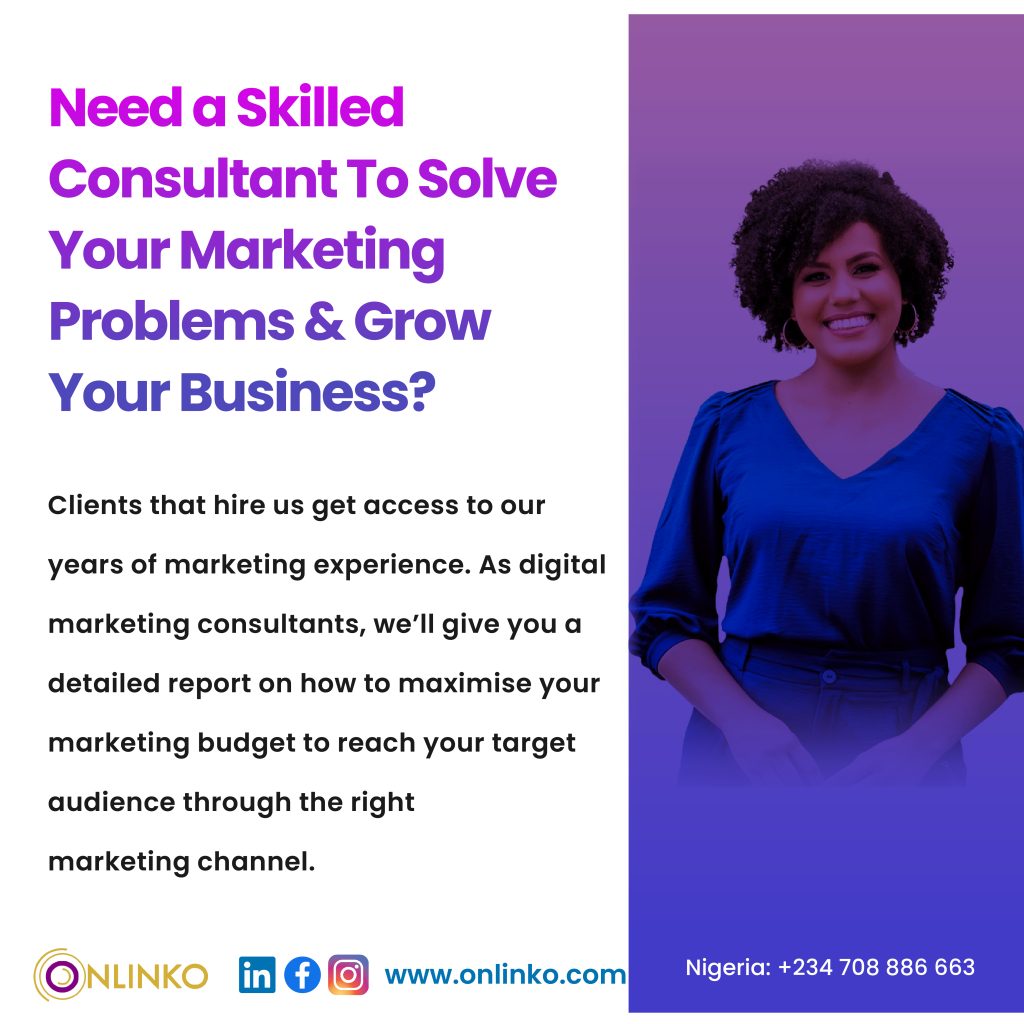Digital advertising is crucial for SMB brands to thrive in a highly competitive marketplace.
Unlike traditional advertising, digital advertising allows SMBs to target specific audiences and measure the effectiveness of their campaigns.
It provides a cost-effective and efficient way to reach potential customers, build brand awareness, and ultimately drive sales.
By embracing digital advertising, SMB brands can level the playing field and compete with larger competitors without breaking the bank.
With the rise of the internet and social media, digital advertising has become the go-to method for businesses, especially small and medium-sized brands (SMBs).
“Advertising is the art of getting a unique selling proposition into the heads of the most people at the lowest possible cost.” — Rosser Reeves.
David Ogilvy famously said, “When I write an advertisement, I don’t want you to find it creative. I want you to find it so interesting that you buy the product.”
Advertising isn’t the art of being as creative, original, or unique as possible; it’s about being thoughtful, analytical, and consistent enough to convey the perfect message to the perfect audience.
Below are 7 timeless rules that are helping brands “show” instead of “tell” and continue to prove remarkable ROI in the process.

1. Know Your Unique Selling Proposition (USP)
In the world of advertising, regardless of channel, medium, or era, the underlying rule is that you must convey your product’s “unique selling proposition,” otherwise known as its USP.
Your product needs to make a concise, realistic, and easily understood proposition to the consumer about how your product will enhance their lives, solve their problems, or otherwise add some additional value that they can’t find anywhere else.
People are immediately wary of being sold to when they see an advertisement and can easily see right through an empty promise.
Combined with the fact that our attention spans are shorter than they’ve ever been what you’re left with is an extremely narrow window to convey a message to a receptive audience.
In terms of making an emotional (and lasting) connection with your ideal consumer, you’re aiming for a very small bullseye.
That’s why you need to explicitly spell out a direct correlation between the purchase of your product and the receipt of a benefit, something unique that the competition cannot or does not offer or a claim that’s never been made before.
Keep in mind, that this needs to be strong enough to lure a large number of people, so it needs to be objectively compelling relative to your audience as well.
2. Make The Product The Hero of Your Ad
This rule relates to an age-old advertising mantra, which is making sure that your advertisements are “showing” rather than “telling.”
Contrary to popular belief, celebrity testimonials on average tend to underperform as an ad tactic.
Not only are viewers more likely to remember the celebrity rather than the brand that they were representing, but today’s savvy viewers will recognize right away that the person has been bought and tend to tune out.
That’s why it’s so important to always ensure your product remains the front-and-center hero of your advertising. Your product in many ways is your hero, and the most effective way into consumers’ minds is by appealing to their reason and conveying a clear benefit rather than trying to entice them with smoke and mirrors.
In terms of design, it’s critical that the visual presentation of the product itself, as well as any accompanying imagery, matches the message of your advertising.
The perfect ads are complementary two-handers between on-brand imagery and messaging, which collectively interpret your USP
3. Know Your Audience
To determine how to most accurately and effectively cater to your crowd, you need to have a deep understanding of who exactly your crowd is.
Detail their demographic, location, work, and personal details to gain a precise grasp of who they are so that you can develop effective advertising around attracting them.

There’s only so much bandwidth in people’s hearts and brains for products in the same vertical, so you need to be extremely targeted to connect with the people most compatible with your product.
If your USP sounds cool to you but doesn’t appeal to your audience, it’s largely useless. Conversely, even if you think your product is boring, as long as your consumer doesn’t, you’ll succeed!
Ultimately it’s about promising your customers what is most important to them. Dish detergent buyers don’t care how big your company is.
They care that your product is affordable, responsibly made, and cleans their dishes. Perform competitive research around products or brands similar to yours, as well as their consumers, to understand what your target audience’s needs are and how that audience expects a product like yours to provide a meaningful solution.
If your product is already on the market, ask for user feedback. Analyze why the people who’ve made a purchase decided to do so and vice versa.
What you’re striving for is an understanding of what makes people buy your product and how you can best appeal to that.
4. It Takes Money to Scale Money
A digital advertising spin on a classic cliche! But seriously, you need to budget wisely and be financially prepared not to see returns on your ad spend for at least a few months;
it takes time for the tires of your campaign to hit their tracks and even more time to reorient your audiences and retarget ads effectively.
Be realistic about how many lines you’ll have to cast in the water before getting any bites, much less reeling in a sizable catch.
Your budget also needs to accurately reflect your expected deal size. To catch a fish that big, the bait is expensive.
Not to mention, it takes constant analysis and optimization to tune your campaign to the perfect frequency and reach the exact audience you’re targeting. Here’s one easy way to save money:
if your ads prove that your USP is working, keep it! The worst thing you could do to your advertising efforts is to change the formula when your USP is connecting.
Time-worn trends have proven over and over that readership, viewership, and engagements don’t decline when ads with the same USP are run multiple times; a less creative/genius/original campaign that’s consistent every year will ultimately outgrow a more creative/genius/original campaign that changes every year.
5. Prepare to Test Everything
Part of the long-term and ever-evolving process of fine-tuning your advertising is performing A/B tests, or serving variations of ads to portions of the same audience to see which version(s) garners greater engagements or conversions.
Think of these as field tests that allow you to test ad modification, like changes in messaging, tone, or imagery. You should be testing as many ideas as possible to see which have potential and which don’t.
The more you test, the more you’ll be able to zoom in on what’s most impactful for your audience.
Part of this crucial process is performing constant analysis and creating reports to track every variation from beginning to end and understanding how that informs who your audience is and what’s most important to them.
Keep in mind: you absolutely should be creating and trying different ads with various designs and copy, but only if they all reinforce the same USP.
If variations of your ads convey different USPs, you risk not only confusing or turning off your audience but also blurring your brand’s concise messaging.
Unless a product becomes irrelevant or antiquated, a good advertising campaign will not wear itself out.
6. Walk – Jog – Run
Your campaign needs to learn how to walk before it can run.
These early phases of establishing an audience, testing different advertising, and allocating a long-term ad spend are all about building a firm foundation to build on.
Part of that process is promising one important benefit to your audience and communicating it effectively. Far more important than being original, entertaining, or creative is ensuring that your message is clear and effective.
Speak directly to your consumer by using language and situations familiar to them. Colloquialisms are your friend.
Only once you’ve established these walking techniques can you slowly start to ramp up your budget, audience, and total number of ads.
To effectively scale in the long run, you need to be vigilant and thorough every step of the way as you’re setting up the critical foundation of your campaign
7. Consider Your Channel
The platform or medium you’re using to communicate with your audience is just as relevant as the message itself. Communities on LinkedIn vary wildly from those on Facebook who vary even more from those who consume print.
These are vastly different customer personas that require different types of content to emotionally or personally connect with.
An old advertising rule of thumb is that the most effective photos are those that arouse a consumer’s curiosity.
Consider: what would compel someone on this platform to pause and ponder your USP? Your imagery needs to convey a sense of story appeal, something more meaningful than disposable.
Across mediums, consumers tend to look first at the image on an advertisement before deciding if the headline is worth a read, much less the copy.
Therefore imagery is often your first line of defense in attracting their attention and conveying a compelling USP.
What image on your platform of choice is going to most appeal to your crowd? Regardless of medium, another underlying rule of thumb that applies to nearly every form of advertising: cast a wide net.
Reaching your target audience less often but making that audience as large as possible is the surest path to converting as many consumers as possible
CONCLUSION
Advertising is an ever-evolving industry where new trends, mediums, and best practices are always in development and regularly shaking up the status quo.
Fundamentally, however, so many of the rules that inform the best advertising and the most successful campaigns are just as relevant and effective today as they were 75 years ago.
Let these inform all of your ad strategies, regardless of platform or budget. If you do, we’re confident the results will speak for themselves.
